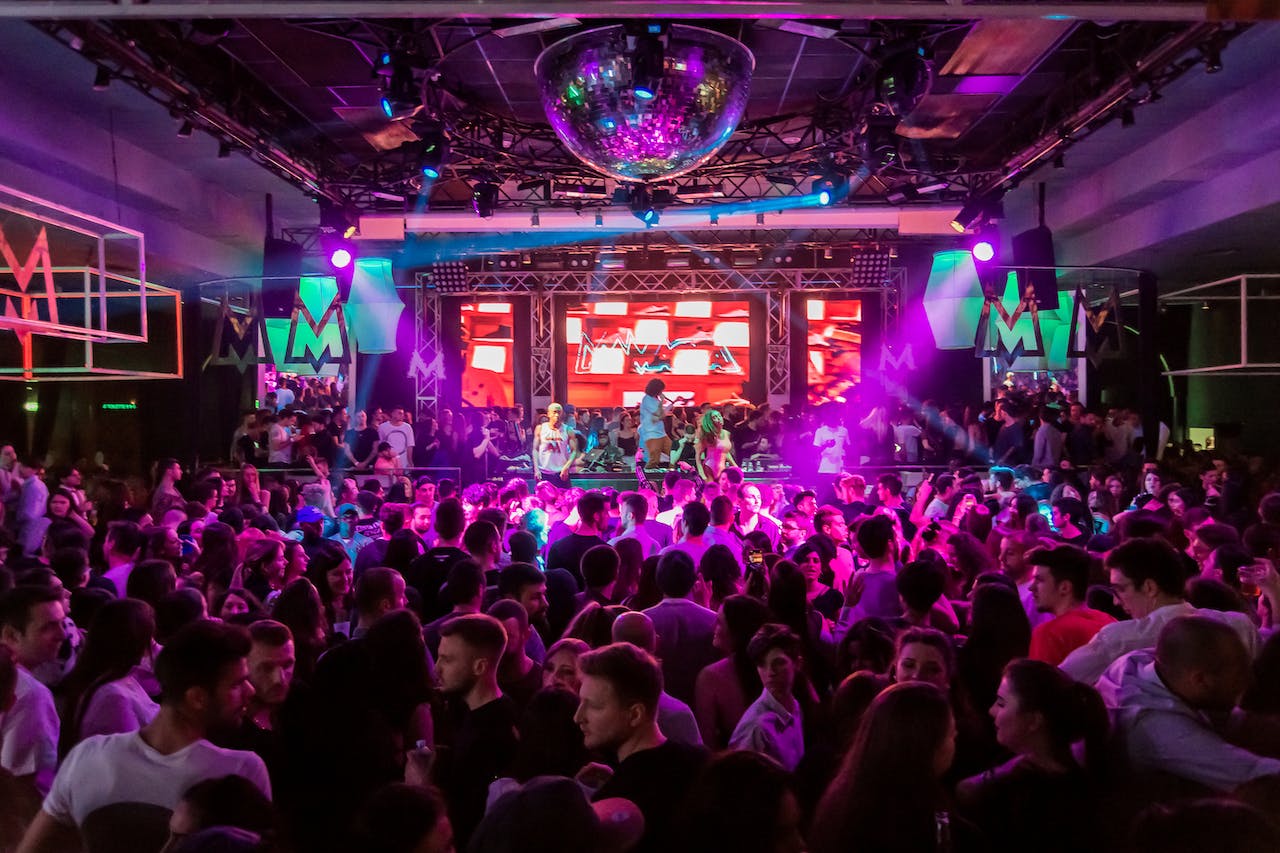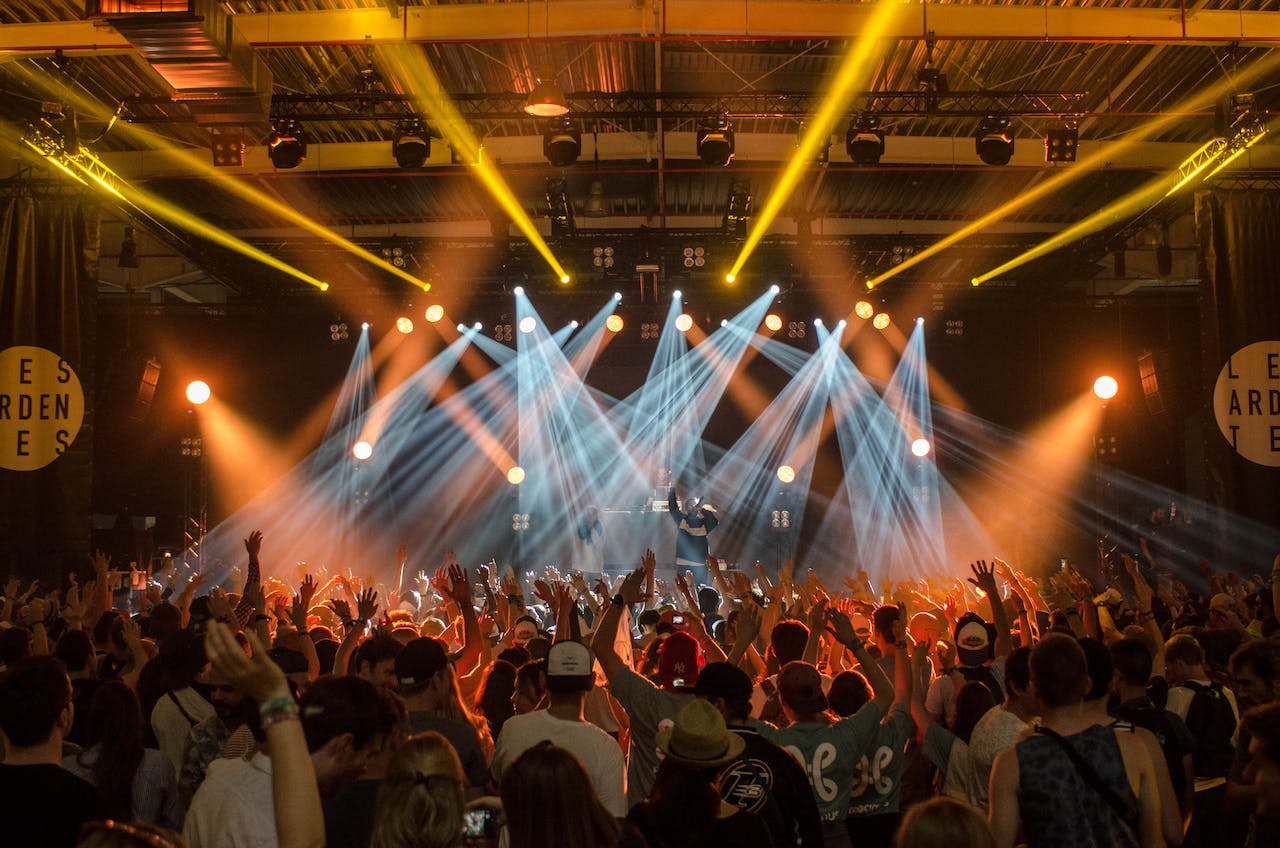In the late 1970s, amidst the bustling streets of New York City, a cultural phenomenon was born that would forever change the landscape of music and nightlife. Studio 54, a nightclub located at 254 West 54th Street in Manhattan, emerged as the epicenter of the disco era, encapsulating the spirit of freedom, excess, and innovation that defined the times. This legendary venue was not just a place to dance; it was a sanctuary for expression, a melting pot of creativity, and a witness to the evolution of music that still resonates today.
The Birth of Studio 54 – A New Era in Nightlife
The inception of Studio 54 in the late 1970s marked a pivotal moment in the history of nightlife, not just for New York City but for the entire world. Its founders, Steve Rubell and Ian Schrager, embarked on a venture that would transform a former opera house and television studio into an icon of disco and decadence. This section delves into the history and beginnings of Studio 54, exploring the vision behind its creation and the transformation that led to its legendary status.
The Visionaries
Steve Rubell and Ian Schrager, two friends from Brooklyn, were the masterminds behind Studio 54. Prior to their nightclub venture, Rubell and Schrager were involved in the hospitality industry but sought a project that would catapult them into the limelight. They envisioned a nightclub that would redefine the concept of nightlife, combining music, fashion, and art in an environment that was as inclusive as it was exclusive.
Choosing the Venue
The selection of the venue was crucial to the identity of Studio 54. The building at 254 West 54th Street had a rich history, having housed the Gallo Opera House and later the CBS Radio and Television Studio. Its spacious interior, with high ceilings and a grandiose architecture, provided the perfect canvas for Rubell and Schrager’s ambitious project. The decision to retain the name “Studio 54” was a nod to its artistic legacy and its location on 54th Street.
The Transformation
The transformation of the space into Studio 54 was a monumental task. Rubell and Schrager enlisted the help of theatrical set designers and lighting experts to create an environment that was both mesmerizing and functional. The club was outfitted with state-of-the-art lighting that could create dramatic effects, from sweeping spotlights to intimate, glowing ambiances. The sound system was equally impressive, designed to deliver crystal-clear audio that enveloped the dance floor.
One of the most distinctive features of Studio 54 was its ability to change its decor frequently, keeping the experience fresh and exciting. The club hosted elaborate theme parties, where the decor ranged from futuristic landscapes to exotic jungles, transforming the space into a living, breathing work of art.
The Grand Opening
Studio 54 opened its doors on April 26, 1977, to immediate acclaim. The grand opening was a spectacle, drawing a crowd that included celebrities, socialites, and the who’s who of New York City. From its very first night, Studio 54 was the place to be seen, setting a new standard for what a nightclub could be. The success of the opening night was a testament to Rubell and Schrager’s vision and the beginning of Studio 54’s legendary run as the heart of New York City’s nightlife.
The birth of Studio 54 was a watershed moment in the history of entertainment. Through the vision of Steve Rubell and Ian Schrager, a simple idea morphed into a cultural phenomenon that would define an era. The transformation of a former opera house into a nightclub extraordinaire was a bold move, but it paid off, creating a legacy that continues to captivate the imagination of those who wish they could have experienced the magic of Studio 54 for themselves.
Musical Influence
- Birthplace of Disco and Beyond: While disco music was already on the rise, Studio 54 played a crucial role in cementing its popularity. The club’s pulsating energy and open embrace of disco culture contributed to the genre’s mainstream success.
- Influence on Electronic Dance Music: The legacy of Studio 54 can be traced in the evolution of electronic dance music (EDM). The club’s emphasis on dance, combined with its innovative use of lighting and sound, laid the groundwork for the sensory experiences that define EDM venues today.
The Music of Studio 54
Disco Dominance: Studio 54’s soundtrack was deeply rooted in the disco genre, which was at its peak during the late 1970s. The vibrant beats and rhythmic basslines of disco music were the lifeblood of the club, compelling everyone to dance.
- Funk and Soul Influence: Beyond disco, Studio 54 embraced the rich textures of funk and soul music. These genres added depth to the club’s playlist, with their groovy basslines and powerful vocals enhancing the overall sensory experience.
- Early Electronic Sounds: The club was also one of the early adopters of electronic music, incorporating synthesizer-driven tracks that added a futuristic vibe to the dance floor, hinting at the direction music would take in the years to follow.
- Legendary DJs: The DJ booth at Studio 54 was graced by pioneering DJs such as Nicky Siano and Larry Levan. Their innovative mixing techniques and ability to read the crowd were instrumental in creating the unique atmosphere that Studio 54 was known for.
- Iconic Anthems: Studio 54 was the birthplace of numerous dance anthems that have since become timeless classics. Tracks like “Le Freak” by Chic, “Stayin’ Alive” by the Bee Gees, and “I Will Survive” by Gloria Gaynor not only filled the dance floor but also became symbols of the era’s vibrant culture.
- High Energy Atmosphere: The DJs at Studio 54 were masters at maintaining a high-energy atmosphere, seamlessly blending tracks to keep the momentum going. Their skillful transitions and song selections ensured that the dance floor remained packed throughout the night.
- Cultural Impact: The music played at Studio 54 had a profound impact on popular culture, influencing fashion, dance, and mainstream music. The club’s eclectic mix of genres helped to break down musical barriers, contributing to the evolution of the music industry.
- Global Influence: The popularity of the music played at Studio 54 extended far beyond the walls of the club, with many of the tracks becoming international hits. The club played a significant role in spreading disco music around the world, shaping the global music landscape of the era.
- Soundtrack of a Generation: The music of Studio 54 provided the soundtrack for an entire generation, encapsulating the spirit of freedom and joy that defined the disco era. It continues to evoke nostalgia and inspire new generations of music lovers.
The Culture and Influence
Studio 54 was not merely a venue for nightly escapades but a crucible of cultural innovation that mirrored and molded the zeitgeist of the late 1970s and early 1980s. This legendary nightclub became a nexus where the pulsating beats of disco intertwined with the burgeoning scenes of fashion, art, and music, creating a dynamic and vibrant cultural tapestry that was reflective of a society in flux.
A Confluence of Creativity
At its core, Studio 54 was a sanctuary for creativity, where the avant-garde met the mainstream, and the extravagant met the everyday. It was a space where artists, musicians, designers, and celebrities converged, each contributing their unique flair and vision to the club’s ever-evolving identity. This confluence of creative minds turned Studio 54 into a live canvas, showcasing the latest trends in fashion, art installations that challenged conventions, and music that pushed the boundaries of genre and form.
The Velvet Rope – A Symbol of Exclusivity
The club’s door policy, orchestrated by the charismatic Steve Rubell, became an emblem of exclusivity and allure. The velvet rope at Studio 54 was not just a physical barrier but a gateway to a realm of opulence and fame. Gaining entry was akin to receiving a seal of approval from the highest echelons of society. This selective admission process created an environment where being seen at Studio 54 was a statement of one’s social and cultural capital.
Fashion and Liberation
Studio 54 exerted a profound influence on the fashion industry, serving as a runway for experimental and daring designs. The club’s atmosphere of liberation and self-expression encouraged patrons to don their most extravagant outfits, breaking free from conventional norms and embracing individuality. This celebration of personal style and flamboyance reverberated through the fashion world, inspiring designers to incorporate elements of disco glam and Studio 54’s eclectic aesthetic into their collections.
Musical Legacy
The impact of Studio 54 on music extended far beyond its walls, playing a pivotal role in the evolution of disco and paving the way for the emergence of electronic dance music. The club’s DJs were instrumental in popularizing new sounds and remixes, influencing the direction of mainstream music and club culture. The eclectic mix of tunes played at Studio 54 not only defined the soundtrack of an era but also contributed to the development of new musical genres, blending disco with elements of funk, soul, and early electronic beats.
Cultural Influence and Legacy
Studio 54’s influence permeated various aspects of culture, from the way people partied to how they expressed themselves through fashion and music. The club’s ethos of inclusivity, freedom, and boundless creativity left an indelible mark on the nightclub scene, inspiring a generation of venues that sought to replicate its magic. The fascination with celebrity culture, sparked in part by the nightly spectacle of stars at Studio 54, continues to captivate the public imagination, underscoring the enduring legacy of this iconic venue.
In essence, Studio 54 was more than a nightclub; it was a cultural phenomenon that encapsulated the spirit of an era. Its legacy is a testament to the power of creativity, music, and inclusivity to bring people together and inspire change, leaving an indelible mark on the cultural landscape that continues to resonate today.
The End of an Era and Its Legacy
The era of Studio 54, with its dazzling lights and unforgettable nights, came to an abrupt end in 1980, marking the close of a chapter in New York City’s vibrant cultural history. The convictions of Steve Rubell and Ian Schrager for tax evasion were a stark reminder of the temporal nature of the disco paradise they had created. The subsequent attempts to revive Studio 54 under new stewardship never quite managed to recapture the original allure and energy that had defined its heyday. The unique blend of celebrity glamour, groundbreaking music, and unfettered joy that characterized Studio 54 seemed irreplaceable, leaving many to mourn the loss of this iconic venue.
Despite its closure, the spirit of Studio 54 refused to fade into the annals of history. Instead, it evolved into a symbol of the transformative power of music and the cultural revolution of the disco era. The club’s legacy continued to thrive, influencing not just the realm of nightlife but also the broader domains of music, fashion, and social interaction.
Influence on Modern Nightlife
The blueprint laid down by Studio 54 for what a nightclub could be—spaces of inclusivity, artistic expression, and musical innovation—has left an indelible mark on contemporary club culture. Modern nightclubs continue to draw inspiration from the immersive experiences that Studio 54 was famed for, striving to create environments where patrons can escape the mundane and partake in a world of fantasy and freedom. The club’s pioneering approach to integrating music, lighting, and decor has become a staple in nightclub design, pushing the boundaries of what is possible in creating captivating nightlife experiences.
Music and Cultural Renaissance
The music of Studio 54, once seen by some critics as a fleeting trend, has since been reassessed and celebrated for its groundbreaking impact on the music industry. The disco era, with its infectious rhythms and themes of liberation and joy, laid the groundwork for subsequent musical genres, particularly electronic dance music. The club’s legacy in music is a testament to the enduring appeal of disco and its ability to adapt and resonate with new audiences. Artists and DJs continue to sample and remix classic disco tracks, reintroducing the vibrant energy of the 70s to contemporary music lovers.
Social and Cultural Impact
Studio 54’s emphasis on diversity and self-expression has had a lasting impact on social norms and cultural practices. The club was a haven for marginalized communities, particularly the LGBTQ+ community, providing a space where individuals could express themselves freely and without judgment. This ethos of inclusivity and acceptance has permeated modern social discourse, contributing to a more open and tolerant society.
Conclusion
The end of Studio 54’s reign was not merely the closure of a nightclub but the conclusion of an era that had redefined the cultural landscape. Its legacy, however, continues to illuminate the worlds of music, nightlife, and social interaction. Studio 54 remains a beacon of creativity, diversity, and freedom, inspiring generations to embrace the transformative power of music and the importance of spaces that celebrate the full spectrum of human expression. The legend of Studio 54, with its tales of excess, glamour, and groundbreaking music, endures as a reminder of a moment in time when life was celebrated with unbridled joy and abandon.



